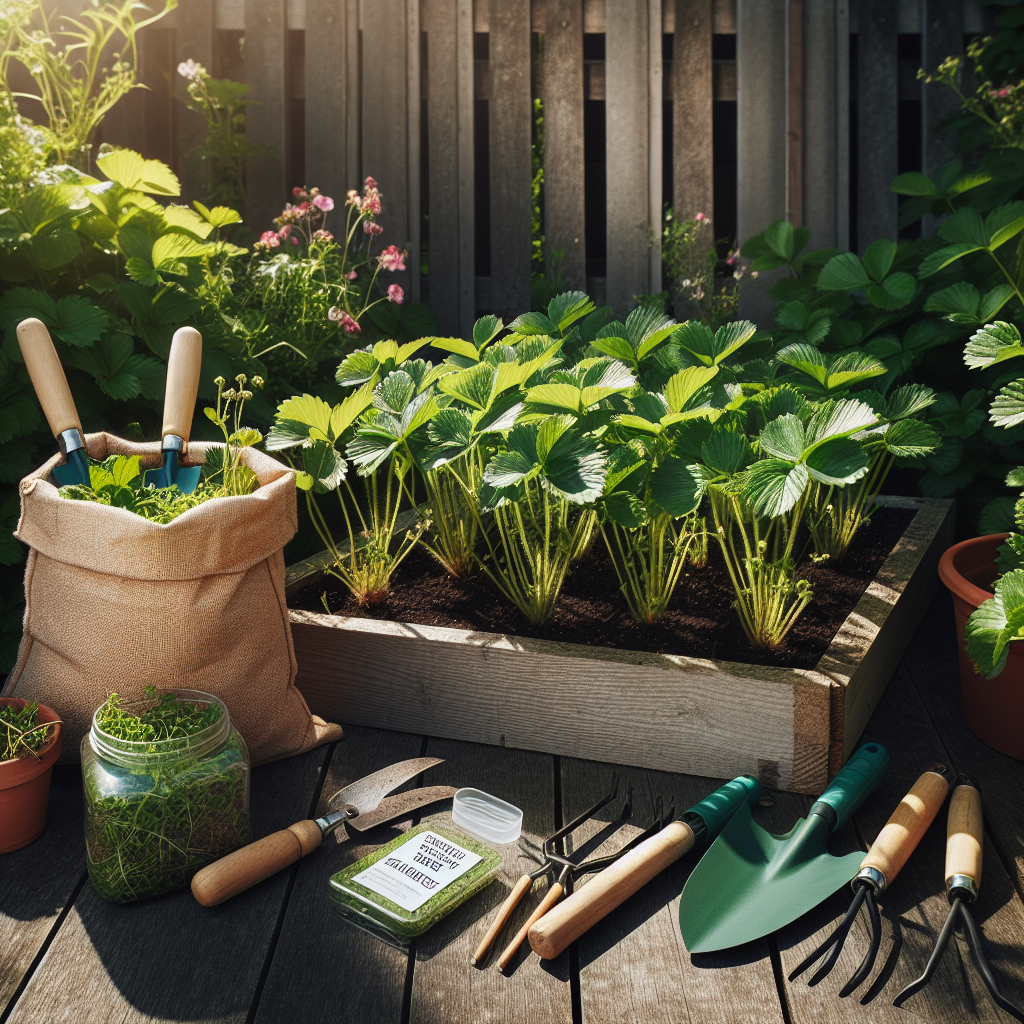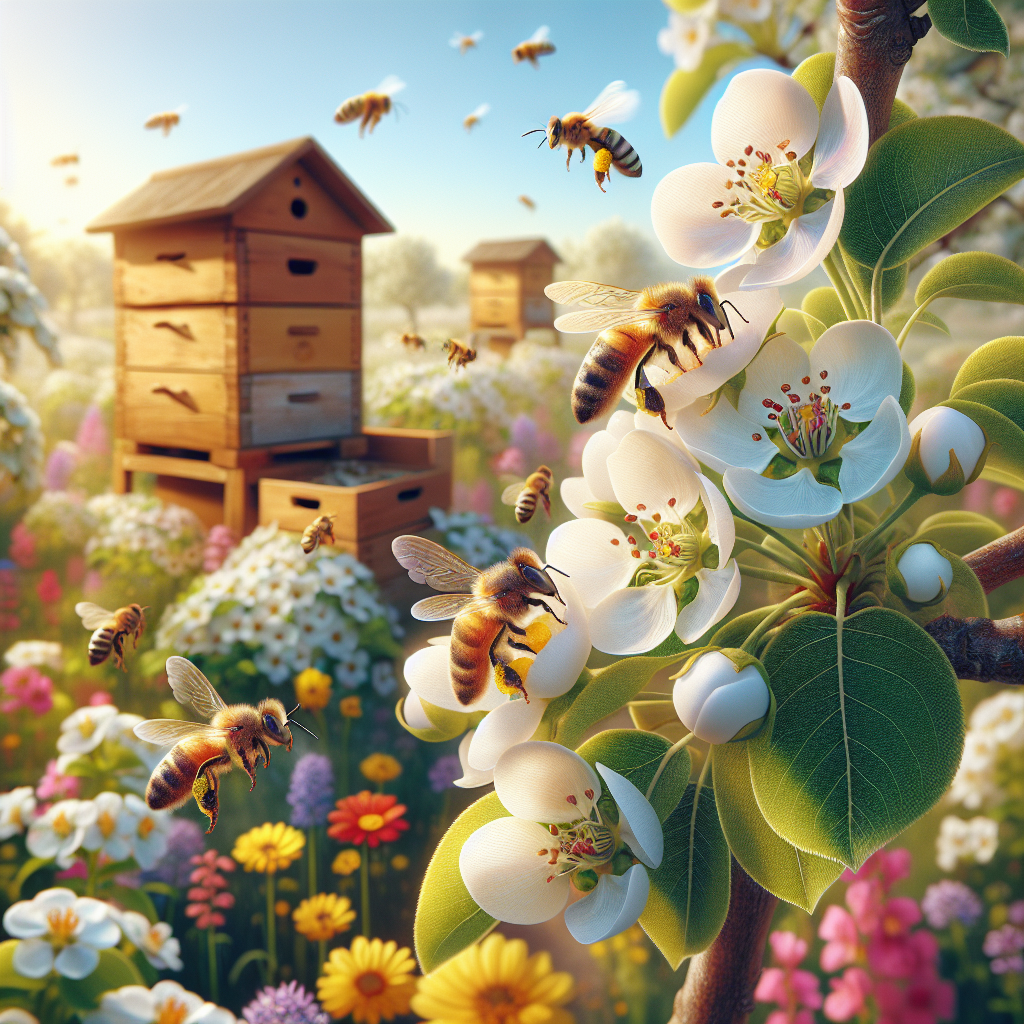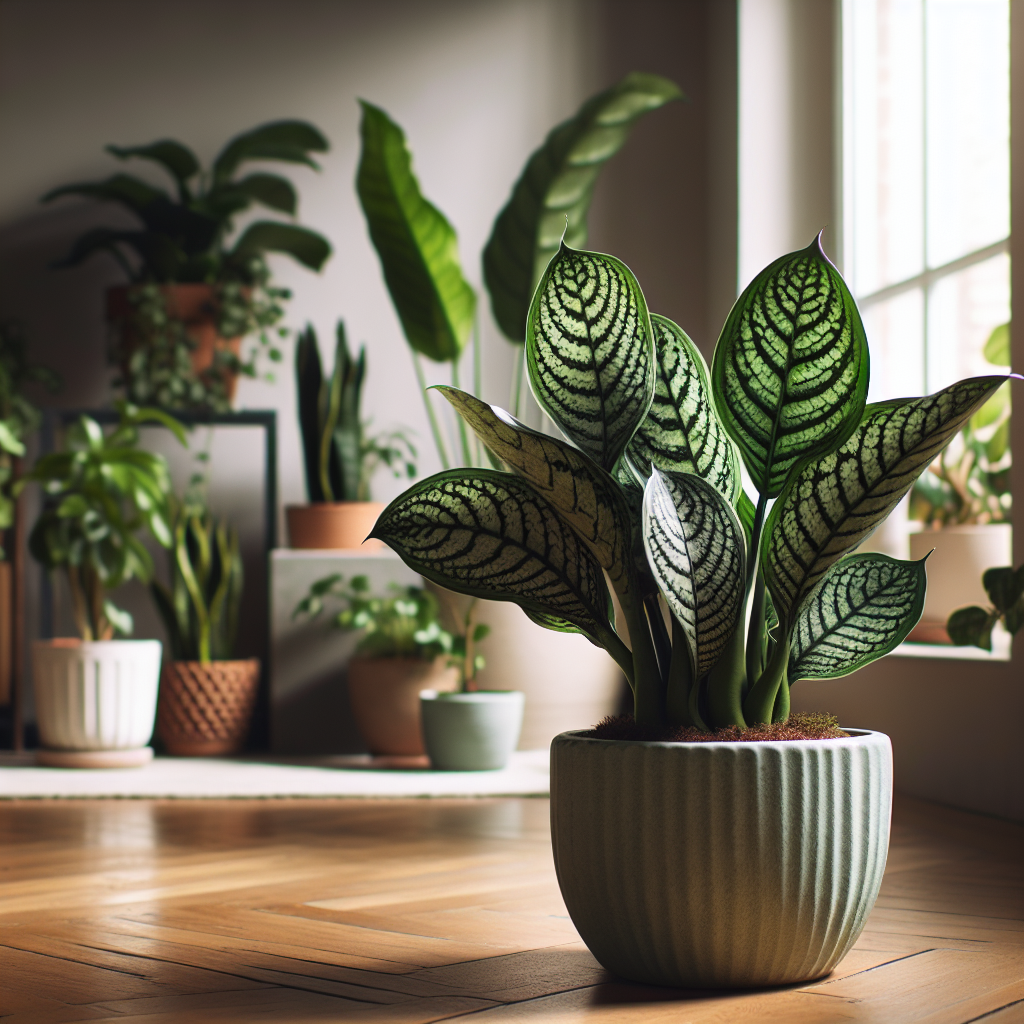Controlling Weeds in Strawberry Beds
Updated June 1, 2024 at 8:59 am

Essentials of Strawberry Plant Care
- Pet Friendly: Strawberry plants are generally safe for pets. They are non-toxic to cats and dogs, but keep an eye out, as some pets might see the ripe berries as a tempting treat.
- Light Requirements: Strawberries thrive in full sun, so make sure your beds are positioned to receive at least six to eight hours of sunlight daily.
- Watering: Consistent moisture is key – water regularly to maintain evenly moist soil, especially while the berries are developing.
- Humidity: Average outdoor humidity is typically acceptable for strawberries. Overhead watering should be avoided to minimize leaf diseases.
- Temperature: Strawberries prefer warmer days but need cool temperatures, ideally between 60-80°F, to produce berries.
- Difficulty: With a little knowledge and regular care, strawberries are relatively easy for gardeners of all levels.
Identifying Common Weeds in Strawberry Beds
When managing strawberry beds, you’ll battle a variety of weeds. Chickweed, with its small star-shaped flowers and fast-growing nature, is one common adversary. It can quickly take over if not addressed promptly. Another is crabgrass, a grassy invader that sprouts up rapidly in warm weather. You might also encounter dandelions, identifiable by their bright yellow flowers and deep taproots, which can compete with your strawberries for nutrients.
Controlling these weeds begins with a keen eye and a solid understanding of what you’re up against. Regular inspections of your strawberry bed will help you identify these troublemakers early on, which is crucial for maintaining a healthy garden.
Preventing Weeds Through Cultural Practices
One of the best strategies for controlling weeds is prevention. Employing proper cultural practices, such as mulching, can greatly reduce weed emergence. Straw mulch is particularly beneficial for strawberry beds as it keeps the soil moist and the fruit clean, while creating an inhospitable environment for weed seeds.
Another preventative measure is maintaining good soil health with proper fertilization and pH balance. Healthy strawberry plants are more competitive against weeds. Additionally, using crop rotation and leaving the soil undisturbed can prevent weed seeds from germinating.
Organic Weed Control Methods
If you prefer organic gardening, weed control can be a bit more challenging, but it’s still very manageable. Hand-pulling is the most direct and immediate organic weed control method. It’s most effective when done consistently and before weeds set seed.
Another natural method is the use of organic mulches, such as pine needles or shredded leaves. They not only suppress weeds but also add nutrients to the soil as they decompose. For larger areas, tools like flame weeders can be a chemical-free solution, but they should be used with caution around your strawberry plants.
Effective Mulching to Suppress Weeds
When mulching strawberry beds, choosing the right material is key. Organic materials like straw or wood chips are popular choices that decompose over time, enriching your soil. Black plastic mulch is another option; it warms the soil and blocks light, thereby preventing weed growth. However, it does not contribute to soil health like organic mulches do.
When applying mulch, be sure to lay it thick enough to block light (about 2-3 inches) but not so thick that it impedes strawberry plant growth. The mulch should be applied after planting and after any major weeding has been done to ensure a clean start.
Chemical Control of Weeds in Strawberry Beds
While cultural and organic methods are preferable to many gardeners, sometimes chemical controls may be considered for more aggressive weed issues. Selective herbicides that target specific weed species can be used cautiously, though always read and follow label instructions to avoid damaging your strawberry plants.
Non-selective herbicides such as glyphosate can be used for spot treatments with careful application. When using such products, it’s imperative to shield your strawberry plants from potential drift or misapplication to prevent unintended damage.
Manual Weeding Strategies
Though it can be labor-intensive, manual weeding is highly effective and provides immediate results. Use a weeding tool to remove deep-rooted weeds like dandelions to ensure the entire root system is removed and won’t regrow.
Regular monitoring and weeding ensure that your strawberry plants have less competition for resources and a clean environment in which to flourish. It’s less daunting when done frequently, as weeds are easier to manage before they’ve matured and spread.
Mechanical Weed Control and Tools
For those times when weeds have made a sizable intrusion into your strawberry gauntlet, mechanical control methods can be a real time-saver. Among the tools beloved by experienced gardeners is the hoe; a traditional garden hoe allows you to cut weeds down just below the soil surface, disrupting their growth without disturbing your strawberries too much.
Cultivators come in hand-held or long-handled varieties and can be used for stirring the soil around plants to uproot weeds. When it comes to mechanical weeders, the CobraHead Original Weeder & Cultivator Garden Hand Tool is a standout. Its curved head acts like a steel fingernail that makes quick work of both weeding and cultivating. Gardeners rave about its versatility and durability, making it a worthwhile investment.
Find This and More on Amazon
Using Ground Covers for Weed Suppression
Ground covers can serve as a living mulch, providing a protective barrier that inhibits weed growth. Low-growing plants like clover can be planted between strawberry rows to help with weed suppression. These living mulches also have the added bonus of attracting beneficial insects that help with pollination and pest control.
While ground covers can compete with strawberries for nutrients, they can also help conserve soil moisture and add organic matter to the soil when you mow or trim them. Just be sure to select a ground cover that’s well-behaved and won’t itself become a weed!
Tackling Weeds with Soil Solarization
Soil solarization is a process that can be particularly useful during the off-season in warm, sunny climates. This technique involves covering the soil with a clear plastic tarp for several weeks, which heats the soil to temperatures that kill weed seeds, disease-causing organisms, and some pests.
Though soil solarization requires a period in which the bed can be taken out of production, for proactive gardeners, it’s a chemical-free way to hit the reset button on their strawberry beds. Just make sure to weigh down the edges of the plastic to prevent it from blowing away and to get an effective heat seal.
Herbicide Application Timing and Techniques
Timing is everything when it comes to the effective use of herbicides. Pre-emergent herbicides, for example, are most effective when applied before weed seeds germinate in the spring. They create a temporary barrier at the soil surface, preventing the growth of new weeds, and are good for perennial weed control.
For post-emergent herbicides, which target weeds that have already sprouted, it’s best to apply them when weeds are young and actively growing. This allows the herbicide to be more readily absorbed and translocated throughout the weed, leading to a more complete kill. Always use a spray shield or a precision wand to avoid inadvertent application on your strawberry plants.
Biological Controls for Weeding
Fascinatingly, nature itself can be harnessed to help with your weed problems. Certain insects, nematodes, and even fungi are natural enemies of common weeds. Though this method of control is more complex and still quite experimental, it’s an intriguing area of organic gardening worth exploring for those interested in sustainable practices.
For instance, the use of beneficial nematodes that specifically target weed seeds without harming your strawberries is gaining traction in the agricultural community. It’s said that people who have tried this method are often amazed at the results, with noticeably fewer weeds popping up season after season.
Strategies for Large-Scale or Commercial Strawberry Beds
For those with commercial operations or simply very large gardens, more robust mechanical solutions might be necessary. Tractor-mounted cultivators that straddle strawberry rows can quickly clear large areas of weeds. Some even have sensor technology that can differentiate between crops and weeds, ensuring your strawberries are undisturbed during the weeding process.
Moreover, large-scale organic mulch spreaders can make the task of mulching extensive areas much more efficient, saving you time and labor while still adhering to organic gardening principles. Products like the Agri-Fab 45-0463 130-Pound Tow Behind Broadcast Spreader are lauded for their ease of use and consistency in spreading organic materials evenly.
Find This and More on Amazon
Integrating Companion Planting for Weed Control
Companion planting can be an effective strategy to enhance the overall health of your strawberry beds while controlling weeds. Planting borage, for example, can improve the taste of strawberries and, with its dense foliage, can help suppress the growth of weeds.
Other companions that may deter pests and thus reduce the likelihood of weed proliferation include marigolds and nasturtiums. These plants serve a dual purpose: they brighten up your garden with their blooms and actively compete with weeds, lessening the time you need to spend on your hands and knees pulling unwanted intruders.
Key Considerations for Sustainable Weed Management
For avid gardeners and farmers alike, the ultimate goal is often a sustainable system that manages weeds while promoting a healthy environment. This involves considering the long-term impacts of weed control choices on the soil, beneficial insects, and the surrounding ecosystem.
Adopting a rotation of methods like solarization, mulching, and hand-pulling can reduce reliance on any single method, especially herbicides. Not only is this better for the environment, but it also promotes stronger, more resilient strawberry plants that can withstand the occasional weed.
Keeping Your Strawberry Beds Healthy Beyond Weeding
Beyond simple weed control, ensuring the longevity and productivity of your strawberry beds involves a holistic approach. Regular feeding with well-balanced fertilizers, proper irrigation practices, and the introduction of organic compost are all part of the equation for vibrant, fruitful plants.
Disease management is also crucial, as healthy plants are better able to compete with weeds. Keep an eye out for telltale signs of trouble such as discolored leaves or mold and take action quickly to address these issues.
Planning and Record-Keeping for Continued Success
Savvy gardeners know that a little planning can go a long way when it comes to weed control. Mapping out your strawberry beds, keeping a calendar of weeding and mulching, and recording what works and what doesn’t are all parts of a winning strategy.
This record-keeping helps you anticipate problems before they arise and track which varieties of strawberries do best in your particular environment. Understanding the patterns of your garden can guide you to make informed decisions that result in less weeding and more harvesting.
Empowering Community Through Shared Knowledge
Lastly, it’s worth noting that controlling weeds in strawberry beds isn’t just about individual efforts. Sharing knowledge with fellow gardeners through community gardens, forums, or local agricultural extensions can be incredibly beneficial.
Experiences and tips shared across a community broaden everyone’s understanding of effective methods and entail a mutual exchange that can lead to innovative solutions. Even in this digital age, word of mouth remains a powerful tool for gardeners seeking to tackle the ever-present challenge of weeds.
Shop more on Amazon

